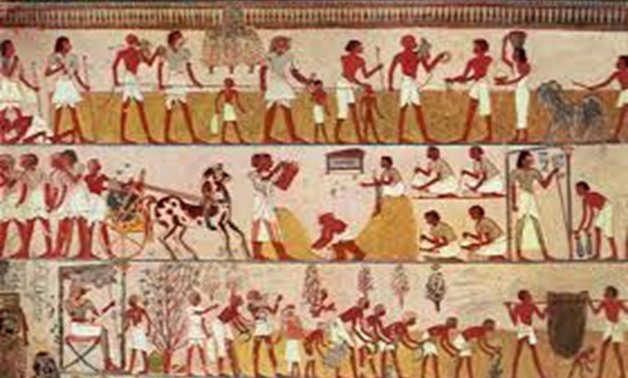
File - Menna tomb.
CAIRO - 3 April 2020: Egypt's Ministry of Tourism and Antiquities, in cooperation with its partners from scientific and archaeological institutes launches a service to visit some of the archaeological sites through the official pages of the Ministry on the Internet and social media by publishing a number of virtual visits to them or an explanation of some museums provided by a number of Egyptian tour guides.
The slogans of these visits will be:
Experience Egypt from Home
Stay Home
Stay Safe
This comes within the framework of the efforts of the Egyptian Ministry of Tourism and Antiquities to introduce some archaeological sites and museums to people from all around the world, to enjoy watching the ancient Egyptian civilization during their time in the homes within the precautionary and preventive measures of COVID-19 disease.
On April 3, Egyptian Ministry of Tourism and Antiquities in cooperation with the American Research Center in Egypt, is launching the first virtual visits to the Menna tomb, which is one of the most beautiful tombs of the nobles in the western mainland in Luxor, which dates back to the Eighteenth Dynasty.
The Tomb of Menna (TT69) is one of the most visited and well preserved of the small 18th Dynasty elite tombs in the Theban necropolis, yet it was previously never systematically recorded or fully documented.
The multiple visits to the tomb over a long period of time and deteriorating environmental conditions had negatively effected the painted interior of the tomb.
Menna was a ‘Scribe in the fields of the Lord of the Two Lands of Upper and Lower Egypt’ during Dynasty XVIII, and his job was probably to document the records of land ownership. His wife’s name was Henuttawi, a Chantress of Amun.
Dated on architectural and stylistic grounds, the reigning king is usually assumed to be Tuthmose IV or Amenhotep III, although there is no mention of the king’s name in the tomb.
The Tomb of Menna Project, headed by Melinda Hartwig from Georgia State University started in 2006 with a feasibility study recording the existing conditions in the tomb chapel.
An action plan was set for documentation, conservation, protection, and publication of the chapel.
From 2007-2009, four major phases were undertaken. In the first phase, the tomb and its environs were surveyed to create the first exact plan of the chapel and its surroundings.
The second phase joined high-resolution digital images with an extensive net of measured points taken inside of the tomb to create an exact plan of the mural and ceiling decoration.
Archaeometry, including XRF, RAMAN spectrometry, and colorimetry, was done in the third phase to aid conservators and art historians in their analysis of the tomb.
These state-of-the-art portable techniques non-invasively documented the physical and chemical properties of the painting and its substrate.
Conservation comprised the fourth phase, and included stabilization, intervention, and the final presentation of the painted wall decoration.
The tomb was given a new wooden floor and rail system, LED lighting and a bilingual information panel in Arabic and English.

Comments
Leave a Comment